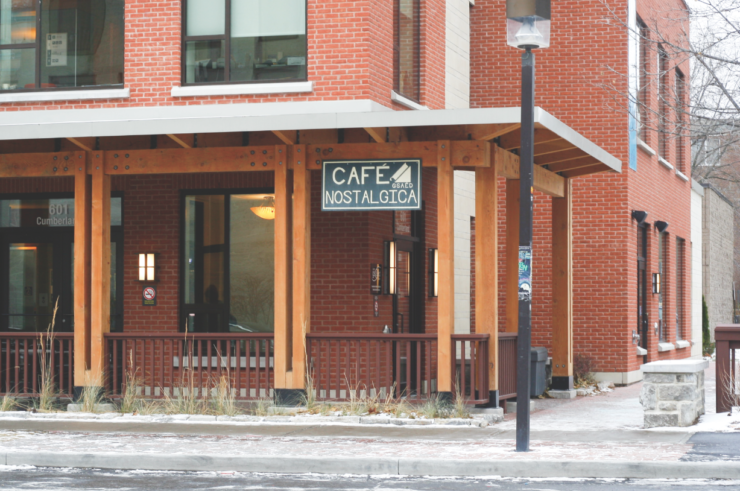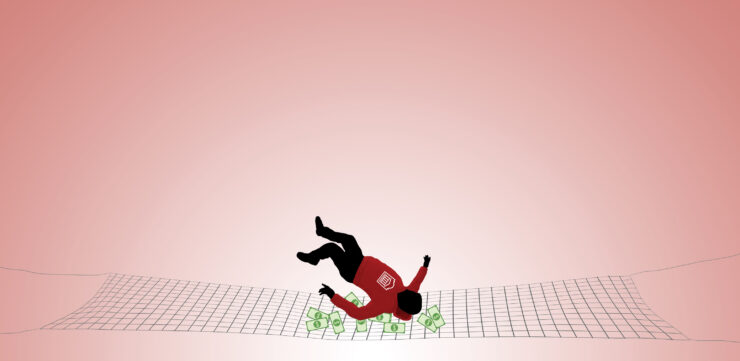The government needs to cut recent graduates a break
Illustration by Tina Wallace
For some, graduation is just around the corner and the Ontario government is ready to masquerade as a credit agency, knocking on the doors of recent grads asking for their OSAP money back. Many students are left in a crunch with only six months until they start paying their loans after graduation. They’re pushed into a job market with a 16–17 per cent youth unemployment rate while they compete against older and more experienced workers for entry-level positions. It’s normally considered cruel to kick someone when they’re down but judging by the economic climate, that’s exactly what the province of Ontario is doing by forcing students to pay their loans back so soon after graduation.
This system, built during a time when a post-secondary degree was much cheaper and provided the golden ticket to economic prosperity, has to change. I feel a system based on income earned, similar to the Canadian Pension Plan, would provide students in debt with more opportunities to earn a decent living post-graduation, while being able to save to meet their long-term economic goals.
In many cases, the graduates’ monthly payments represent a considerable portion of their income, money that is rarely spent on anything other than staples, like food and rent. According to a 2012 study by the Royal Bank of Canada, 58 per cent of students expect they’ll graduate with more than $20,000 worth of debt, and 21 per cent believe their debt will be higher than $40,000. When you put those numbers through OSAP’s repayment calculator, $20,000 of debt paid out over 9.5 years — the usual payment term according to OSAP — at the current 3.5 per cent interest rate brings a student to $232 per month in payments. At $40,000, this number jumps to $463 per month.
That’s a lot of money for someone making minimum wage and means much more to that person’s survival than it would to the provincial government. If payments are based on income, it’ll be much easier for recent graduates to maintain financial stability and simultaneously ensure the government receives a return on their economic investment.
Outside of the basic day-to-day necessities these savings could bring grads, they would also help young professionals gain long-term economic stability. According to a 2010 study by Statistics Canada, student loan borrowers between the ages of 20 and 45 are less likely to have savings, investments, or own homes compared to those who didn’t take out loans. Those between ages 20 and 29 who didn’t take loans had an average net worth of $44,400 more than their counterparts. These numbers are made worse by the fact that in 2012 9.8 per cent of the nearly 100,000 students who received OSAP defaulted on their loans, negatively affecting their credit, leading to problems taking out mortgages and receiving loans in the future. The current system obviously isn’t working.
By forcing repayment just six months after graduation, the province of Ontario is not willing to back up the investment it originally made in these students. In many cases, the current repayment plan puts a crippling financial burden on someone who is stretched to their economic limit. A more equitable and financially sound system of tying repayment to income would allow for both the government and recent graduates to ensure the choice between food and OSAP payments never has to be made.






